Most of us don’t give much thought to birds except to notice that they’re pretty or that they sing sweetly, or that they sing at 6 am on a Saturday morning when we’re trying to sleep in!
However, birds can be hugely useful on a farm, or they can be extremely harmful. There are several birds that you want to attract to your homestead, and that’s what we’re talking about today.
How useful or harmful birds are to a homestead or farm depends almost entirely on what they eat! You want to attract birds that eat plant-eating bugs or other pests around the farm. The problem here is that, if you eliminate their natural food source, birds will turn to other foods, such as your blackberries, as a food source. As you can see, this is a delicate balance.
On that note, though, there are some birds that only turn to vegetation if they have absolutely no other choice, so those are the birds that you want to attract. These birds serve two purposes, because many of them do hang around in the winter and will eat the bugs that eat your plants in the summer and will eat the seeds of weeds in the winter when there are no bugs to eat.
Win-win! You get rid of your pesky bugs in the summer and weeds won’t have a chance to grow in the spring because the seeds were eaten over the winter.
1. Eastern Bluebirds
We all love to see the bluebirds flitting about in the trees, but they’re also great to have around the farm because their diet consists nearly completely of bugs, primarily beetles, grasshoppers, and caterpillars. They also eat spiders and other bugs.
Bluebirds are found in about every state east of the Rockies, and in Canada. They also winter as far north as Illinois and Pennsylvania so they’re often around in the winter even though they’re seen as harbingers of spring.
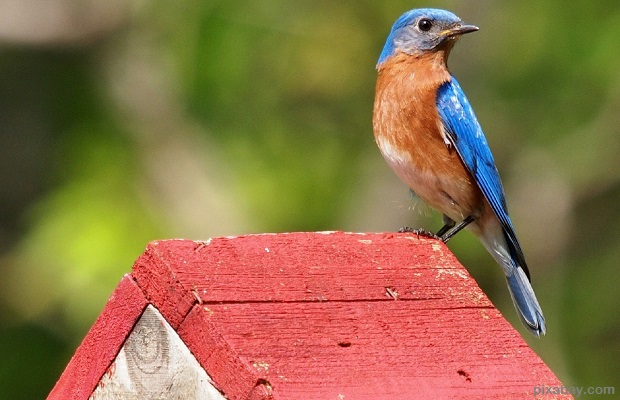
In absence of bugs, there are plants that they’ll turn to, which you can use to attract them to the farm. These include: Blackberries, chokeberries, juniper berries, partridgeberries, Virginia creeper, bittersweet, pokeberries, strawberry bush, false spikenard, wild sarsaparilla, sorrel, asparagus, rose haws, holly, sorrel, greenbrier, and ragweed.
You can also build small boxes in nooks and crannies such as cavities in trees or in tight places in barns or buildings.
2. Western Bluebirds
These birds, found west of the Rockies, are much like their Eastern cousins except they eat even more harmful bugs, and the bugs that they eat are often available year round. They’ll turn to elderberries most frequently if the bugs disappear so that’s what you should plant to attract them.
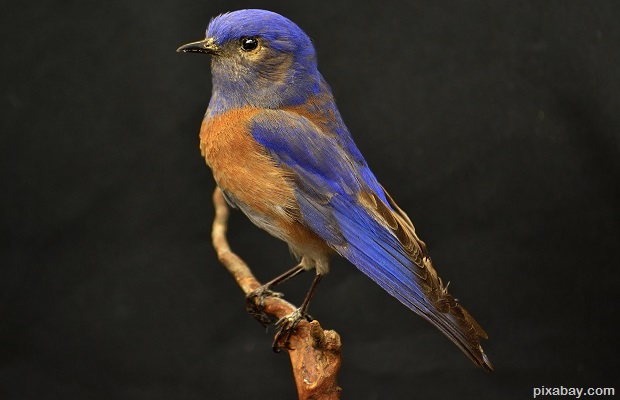
3. Swallows
There are seven common types of swallows including barn swallows, cliff swallows, martins, and white-bellied swallows, also known as tree swallows. These four types have taken almost exclusively to living in structures instead of in their natural habitats and eat a diet high in beetles, flying ants, mosquitoes and other “pest” insects.
To attract them, build boxes in the corners of your barn eves, under the outside eves, or in other high places.
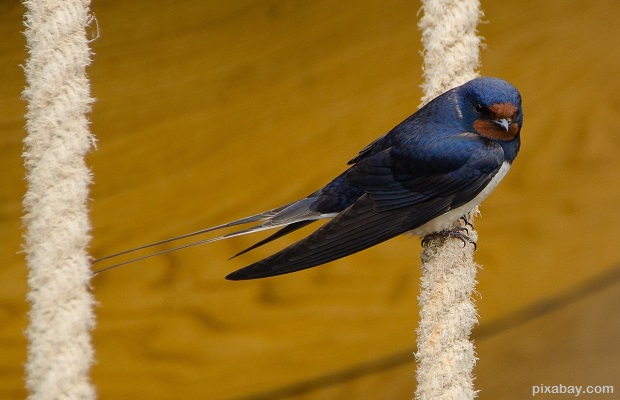
Barn swallows can be enticed by cutting small holes in the gable of the barn, and all of them like to have a bit of mud available to use as mortar for their nests.
4. Meadowlarks
These cute little birds are murderous to the enemies of your garden, making them wonderful inhabitants of your homestead. They eat beetles (including the disaster-causing May beetles), grasshoppers, caterpillars, flies, wasps, and spiders.
In the winter, more than half of the meadowlark’s diet consists of weeds, grains and other seeds, but this is found almost exclusively in winter, when they’re eating waste seeds and kernels, rather than crops.
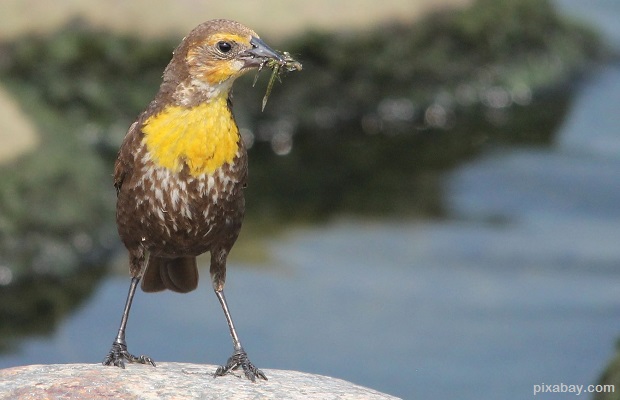
5. Phoebes
There are two types of phoebes: the common phoebe which is found throughout the US east of the Great Plains, and the black phoebe, which is found west of the Great Plains. They prefer to winter fairly far south but migrate north in early spring.
The phoebe eats insects almost exclusively, and most of those are caught in flight. In other words, mosquitoes, click beetles, May beetles and weevils are some of the phoebe’s favorite snacks.
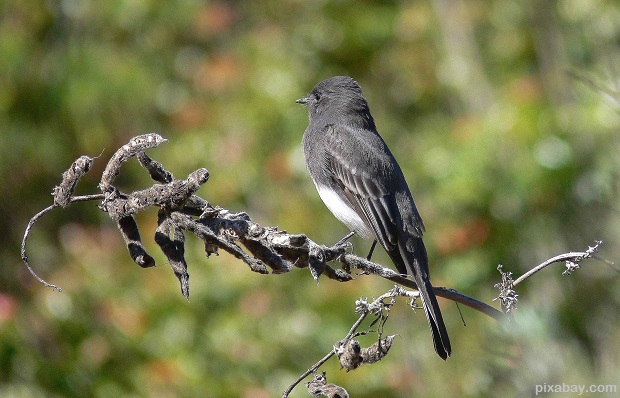
Phoebes love water and open spaces so if you have a shed near a creek, pond or water trough that would be a good place to place a small box to attract them. They prefer the openness though, and just having a shed or a bridge is attractive to them.
6. Barn Owls
Who? You! Do what you can to attract barn owls because they eat all kinds of nasty bugs and rodents. They’re mighty hunters and will do wonders for keeping the rat population down, as well as that of the gophers, moles and other small pests that deteriorate your soil or spread disease.
Owls are also pretty to look at, even though there are many superstitions about them. One of those superstitions that you can believe beyond a shadow of a doubt is that if you see an owl on your farm, you’re in luck because your rodent population is about to go down!
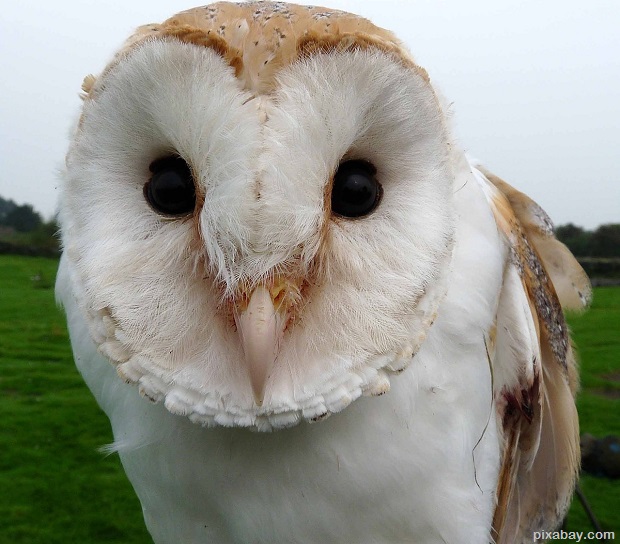
Barn owls used to be attracted by the inner structure of wooden barns but since many modern barns are metal, they’re turning away from them. Fallen trees are another favorite roosting place for owls, but we tend to take care of our properties by removing these as they fall or die.
Because owl feces may be contaminated with salmonella, you want to build barn owl boxes on the outside of the barn facing away from where food and livestock are kept.
We underestimate the value of birds. They look pretty and they may sound sweet or cheerful, but very few people consider how useful they are. If you’re looking for natural ways to get rid of the pests and rodents that damage your soil, eat your plants or otherwise destroy your efforts to raise food, then birds should be your first line of defense.
The birds that we’ve discussed are just a handful of many breeds that are great to have around, but these are birds that are easy to attract, are found throughout most of the United States, and do the most good on a homestead or farm.
Just as there are birds that will help your farm, there are birds that are not-so-helpful. Some are just as hazardous as many of the bugs and rodents that the birds on this page eat, so be careful which types of birds you attract. Just because he’s pretty doesn’t mean that he’s good for your farm!
If you’d like to add a bird to this list, or have something else that you’d like to share, feel free to do so in the comments section below.
This article has been written by Theresa Crouse for Survivopedia.




















































































Add Quail, Grouse, Wild Turkeys, Pheasants, and you have just added to your food supply.
Great list; I would add small raptors to it–small hawks, kestrels, etc.–death to rodents. Larger hawks like red tails threaten your chickens, but the small ones usually won’t. On my farm I keep a long, broad swath of land mowed between the woods and the back of the house–partly for a backyard, partly for a fire break, but mostly for a pair of broadtail hawks who nest in the woods and are out almost daily hunting voles and mice on that swath. A pair of barred owls often hunt there at night too.
I would add to put up bat boxes as well
You left out one of the most common birds…..Sparrows.
The Sparrow is very protective of their nests alerting you if anyone or any thing is approaching, they lay small eggs that are eatable, they are a very alert bird and will lowedly chirp and fly in the opposite direction of whoever is coming to get out of doge if any intruder comes withing 30-40 feet.